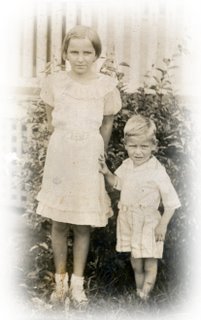
 Forty Two years ago Buzz Aldrin and Neil Armstrong changed history by walking on the surface of the moon.
Forty Two years ago Buzz Aldrin and Neil Armstrong changed history by walking on the surface of the moon. But what happened before Buzz Aldrin and Neil Armstrong exited the Lunar Module is perhaps even more amazing, if only because so few people know about it. (Picture to the left is of the Earth Rising over curvature of the Moon as seen from Apollo.)
Did you know that Buzz Aldrin took communion on the surface of the moon? He wrote an article about the experience in Guideposts magazine some months after his return.
A few years ago, Eric Metaxes wrote about having the privilege of meeting Aldrin and asking him about the communion service on the moon, Aldrin confirmed the story. Metaxes wrote about it in his book "Everything You Always Wanted to Know About God (But Were Afraid to Ask)".
The background to the story is that Aldrin was an elder at his Presbyterian Church in Texas during this period in his life. Knowing that he would soon be making the unprecedented in human history Lunar Mission, Aldrin felt and many agree he should mark the occasion in a special way. Buzz Aldrin asked his minister to help him. The minister consecrated the communion wafers and small vial of communion wine. And Buzz Aldrin took them with him out of the Earth's orbit and on to the surface of the moon.
He and Armstrong had only been on the lunar surface for a few minutes when Aldrin made the following public statement: "This is the LM pilot. I'd like to take this opportunity to ask every person listening in, whoever and wherever they may be, to pause for a moment and contemplate the events of the past few hours and to give thanks in his or her own way." He then ended radio communication and there, on the silent surface of the moon, 250,000 miles from home, he read a verse from the Gospel of John, and he took communion.
Here is his own account of what happened: "In the radio blackout, I opened the little plastic packages which contained the bread and the wine. I poured the wine into the chalice our church had given me. In the one-sixth gravity of the moon, the wine slowly curled and gracefully came up the side of the cup. Then I read the Scripture, 'I am the vine, you are the branches. Whosoever abides in me will bring forth much fruit. Apart from me you can do nothing.
Aldrin had intended to read the communion passage back to earth, but at the last minute [they] had requested that he not do this. NASA was embroiled in a legal battle with Madelyn Murray O'Hare, the celebrated opponent of religion, over the Apollo 8 crew reading from Genesis while orbiting the moon at Christmas. Aldrin agreed reluctantly. He ate the tiny Host (small piece of bread) and swallowed the wine. He gave thanks for the intelligence and spirit that had brought two young pilots to the Sea of Tranquility .
It is interesting to think: the very first liquid ever poured on the moon, and the very first food eaten there, were the communion elements. And of course, it's interesting to think that some of the first words spoken on the moon were the words of Jesus Christ, who made the Earth and the moon - and Who, in the immortal words of Dante, is Himself the "Love that moves the Sun and other stars."
It is personally sad as well as disgusting that NASA thought it had to bow to the wishes of the troublemaker O'Hare and other atheist minorities rather than the Judea-Christian Majority in this Country.


























